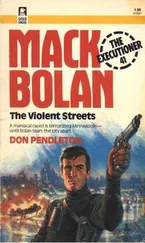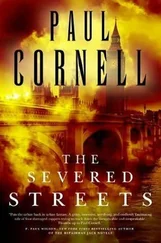“This thing didn’t get much use,” says Kincaid, laughing. “Ain’t but a couple pages stuck together.”
They strike gold after a little less than fifteen minutes, lifting the box spring of the double bed and shoving it against the long wall to reveal a locked metal tackle box. Garvey and Brown begin scanning every key ring discovered in the search, looking for anything that might match the small padlock.
“This one here.”
“No, that’s too big.”
“How ’bout the brown one next to it?”
“Shit on this,” says Brown. “I’m about to open this bitch up with a thirty-eight bullet.”
Kincaid and Garvey laugh.
“Did he have any keys on him?”
“Those are them right here.”
“How ’bout this one?”
“No, try the silver one.”
The padlock slips open, and the tackle box comes apart to reveal several banded packages of glassine bags, a portable scale, some cash, a small amount of marijuana, a healthy collection of jackknives, and a plastic soap dish. Pried open carefully, the knives show not a sign of red-brown residue, but the soap dish opens to reveal a dozen or more.38-caliber rounds, most of them ass-backward wadcutters.
When the detectives are nearly ready to leave, Garvey takes the knives and the soap dish down to Mother Booker, who remains bathed in the blue-gray glow from the television.
“I just want you to see what we’re taking with us. So there’s no problem later.”
“What is that you got?”
“These knives,” says Garvey, “and these here in the dish are bullets.”
The woman briefly contemplates the contents of the plastic dish, glancing for a second or two at stubby lead lumps of the same sort used not a dozen blocks from here to murder her estranged husband, the father of her children. The same type of bullets that killed a mother of two in a rowhouse just around the corner.
“You takin’ those with you?”
“Yes, ma’am.”
“Why?”
“Evidence.”
“Well,” asks the woman, returning her attention to the television, “he gonna get them back, ain’t he?”
The warrant for the Booker home has brought Garvey to within a step of turning two murders from red to black on D’Addario’s side of the board, but ironically, Vincent Booker-if he plays his cards right-is no longer the target of the last seventeen days of pursuit. Instead, he is the weakest link in Robert Frazier’s jerry-rigged story.
Straight legwork took them half the distance: Garvey and Kincaid have run down every element of Frazier’s statement and found, among other things, that the alibi of the dinner party wasn’t worth much. Frazier’s second girlfriend, Denise, the party’s hostess, was decidedly unwilling to go the distance for her man; she readily recalled that on the night of the murder, Frazier had left the party before eleven o’clock after an argument. She also said that Vincent Booker had come by the projects not once, but twice; the second time Frazier left with the boy and didn’t return until morning. Denise remembered this because she had slept alone that night, upset about the party. She had planned all week, buying lobster and Chesapeake blue crabs and corn on the cob. Frazier had ruined her evening.
Denise even volunteered that Frazier kept his.38 revolver at her Amity Street rowhouse and further appalled the detectives by mentioning that she hid the loaded weapon in her children’s toy box in the back bedroom. The gun wasn’t there now, she assured them; Frazier had come by and taken it a week ago, telling her that he was afraid she would be weak and give it to the police.
The detectives also learned that Frazier hadn’t shown up for work at the Sparrows Point plant on the morning after the murder, although he had claimed that he didn’t bother entering Lena’s open apartment door because he was already late for work that morning. Nor had Frazier carried through on his promise to bring in his.38. Garvey wondered why Frazier would even mention that he owned such a gun or, for that matter, why he would offer the police any story at all. Pop quiz: You’ve just killed two people and there is no physical evidence or witness that can link you directly to either crime. Do you: (A) Shut your mouth or (B) Visit the homicide unit and lie your ass off?
“The only answer,” mused Garvey as he typed the warrant for Vincent Booker’s house, “is that crime makes you stupid.”
Frazier’s story was further shattered by the arrival of one additional piece of evidence, a break that owed as much to luck as to legwork.
On the Sunday night of the murder, a sixteen-year-old high school student in the rowhouse next door to Lena Lucas had been staring out of her third-floor window, watching the traffic on Gilmor Street slow to a trickle in the late evening. At about 11:15-she was sure because she had been watching the local news for several minutes-the girl saw Lena and a tall, dark-skinned man wearing a brimmed cap walking from a red sports car parked on the other side of Gilmor Street. The couple walked toward her, toward Lena’s rowhouse, though the young girl couldn’t see much more than that because of the angle from her window. But she heard Lena’s front door close, and an hour later, through the common wall, she heard what sounded like a brief argument between a man and a woman. The noise sounded as if it was coming from below, perhaps from one of the apartments on the second floor of the adjacent house.
For a time, the girl told no one about what she had seen. And when she did finally speak, it was not to the police but to an employee at her school’s cafeteria who she happened to know was Lena’s sister. Upon hearing the story, the woman urged the young girl to call the police. But the witness was reluctant and so, the following day, the woman herself called the homicide unit. The young girl was named Romaine Jackson, and for all her fear, she needed only a little prodding to do the right thing. When the detectives showed her the array of six photographs, she hesitated for only a moment or two before picking out Robert Frazier. Then, after the young girl read and signed her statement, Rich Garvey drove her back to West Baltimore, letting her out of the Cavalier a block or two from Gilmor Street so that no one would see her with a detective. The following day, Garvey and Kincaid cruised the streets near Frazier’s Fayette Street home and found a red car similar to the one described by Romaine. It was registered to Frazier’s mother.
Even with the arrival of a living witness, however, Vincent Booker remained an open door, an escape hatch for Robert Frazier. As much as he was now convinced of Frazier’s guilt, Garvey had to admit that any good defense lawyer could take Vincent’s connections to the case and run wild in front of a city jury. Vincent was somehow involved-the.38 wadcutters in the soap dish made that clear-but as the killer, he simply didn’t add up.
For one thing, there were the nested clothes and the blade marks on the headboard above the bed in Lena’s room; the woman would not have undressed casually and stretched out on the bed for anyone but a lover. That played not to Vincent, but to Frazier. On the other hand, the same gun used to shoot Lena also killed Purnell Booker. What possible connection was there between Frazier and the father of a boy who sold Frazier’s cocaine? Why would anyone want to kill old man Booker? The man who killed Lena took cocaine from that bag of rice hidden in the bureau, but for what did he ransack Purnell Booker’s apartment?
Vincent is the key, and Garvey, looking at the boy beneath the barren white light of the large interrogation room, doesn’t see someone capable of the act. No way did this kid do what was done to his father. Murder, maybe. But not the dozen or more superficial blade wounds to the old man’s face. Even if Vincent could manage something like that with Lena, Garvey is certain that the kid doesn’t have ice enough in his veins to conduct a prolonged torture of his father. Few people do.
Читать дальше












